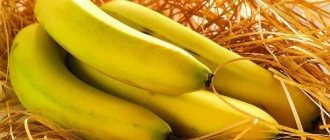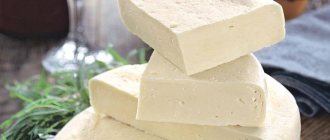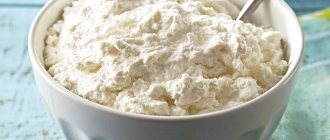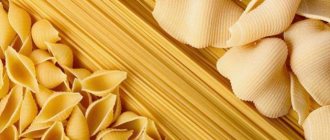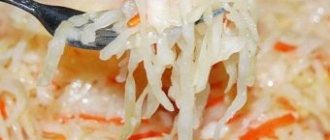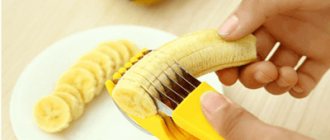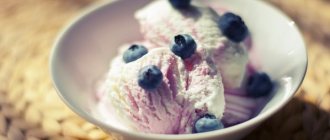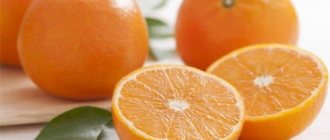Banana is a high-calorie fruit, so it is widely believed that it is not a dietary product. Despite the fact that bananas became available on the market as early as 1633, controversy and rumors about its benefits continue. Some say that the fruit can lift your spirits, some advocate its properties for weight loss, while others talk about its calorie content and high sugar content. The article will tell you what is true and what is false, and whether you can eat bananas while losing weight.
Is it possible to eat bananas while losing weight?
Banana is a rich source of health-promoting chemical compounds and an excellent dessert fruit. It gives quick satiety, improves the functioning of internal organs, stimulates brain activity, increases vitality and elevates mood. Its use is undoubtedly beneficial.
Contraindications and restrictions in this case are minimal. Therefore, if you do not have any serious chronic diseases, you can safely consume bananas. However, watch the quantity. Please note that this fruit is very high in calories - 100 g contains about 100 - 110 kilocalories. This is not the highest figure, but if you strictly monitor your figure and nutrition, then such numbers may seem too high to you.
To prevent bananas from causing weight gain, you just need to eat them in limited quantities. Also, watch your diet in general. If you, along with these fruits, eat a sufficient amount of healthy, low-calorie foods, then there will be no harm to your figure.
Banana calories
Calorie content and glycemic index depend on the degree of ripeness of the fruit. Thus, an unripe fruit has only 89 kcal per 100 grams of weight and a low GI level - only 35-40 units, which means that the exotic fruit contains a small amount of carbohydrates. But the calories in a dried banana are off the charts - there are 346 per 100 grams. When losing weight, you are allowed to eat unripe fruits, but you cannot get carried away with ripe or overripe ones, because the average level of their glycemic index is from 50 to 60 units.
Menu
For breakfast, you can eat as many bananas as you want, but just don’t overeat. On the first day of the diet, you can eat 1 banana, and after 20-30 minutes evaluate your feelings. If you feel like you're not full, you can eat another piece of fruit or take it with you to work. Subsequently, you can eat 2 bananas for breakfast. They should be washed down with warm water without gas or flavorings.
Bananas take a long time to digest, so they are usually enough to last you until lunch. However, if you feel that you cannot stick to such a menu, you can eat a portion of oatmeal cooked in water for your second breakfast. It is better not to use sugar, and to brighten up the bland taste, you can cut pieces of any fruit, except bananas, into the porridge.
For lunch, it is advisable to eat soup and main course to make the meal satisfying. There are no restrictions on the choice of dishes, but for those who have decided to thoroughly take care of their figure, it is better to give preference to healthier foods. For example, meat can be boiled, steamed or baked rather than fried.
Dinner should be relatively light. You can cook chicken or fish with some side dish and vegetable salad dressed with olive oil. If you are used to drinking kefir for dinner, you will have to give it up, because the diet prohibits any dairy products. It's better to eat an apple or drink a glass of tea.
Interesting: The duration of the Japanese banana diet can be chosen at your discretion. Some people follow it for 2 weeks, others for several months, and others even accept it as a permanent principle for building a diet.
Be based only on your own feelings and evaluate the result achieved without pushing yourself into rigid limits.
Which bananas are healthier - green or yellow?
The delicious fruit contains resistant starch, especially in unripe bananas. This is a type of fiber that is not digested by the body and is found in its original form in the intestines. Thanks to this, the functioning of the gastrointestinal tract improves. That is, bananas have a positive effect on intestinal health.
In addition to starch, fruits also contain pectin, a type of plant fiber. As bananas ripen, the amount of starch decreases and the amount of pectin increases and the fruit becomes soft and tender.
Potassium is the main trace element found in the yellow fruit. It contains 9% of the daily requirement of this microelement and is one of the products that modern people often lack (especially with problems with kidneys or blood pressure).
Plus, bananas contain 8% of the daily dose of magnesium, which performs many functions in the body, the violation of which leads to sudden weight gain. In addition, bananas contain a lot of vitamin B6, vitamin C, as well as copper and manganese.
How to store it correctly so as not to turn black?
Preserving bananas at home for a long time without them turning black is difficult. For darkening is natural for this type of fruit.
All fruits produce ethylene gas, which helps them ripen. But bananas give off a lot of it. Under the influence of ethylene, the yellow pigment in fruits disintegrates. And dark spots appear. The process is called enzymatic toasting.
It may seem that if you put fruit in the refrigerator, the frying process will be slower. But that's not true. Temperatures below +10 degrees, on the contrary, speed up the process.
However, you can still store bananas in the refrigerator. But only if they have already become dark. At low temperatures they will continue to darken, but will rot more slowly.
But to prevent the fruits from darkening, it is better to store them at room temperature, tightly wrapping the place of attachment to the bunch with cling film.
Wrapped fruit can be kept on the table. But it's better to hang it on a hook.
You can also freeze bananas. Purified. Whole or chopped. But we must remember that after defrosting the fruit will become too soft. And it will only be suitable for making smoothies, pureeing, etc.
Banana diet for weight loss

Banana diet for 7 days
This diet option is quite simple to implement, but it is no less effective than the next one. You are allowed to consume up to 1.5 kilograms of peeled bananas per day, drink green tea or heated boiled water in any quantity. This simple method of losing weight makes it possible to get rid of 1 kilogram of excess weight per day or 7 kilograms in 7 days. If you feel a strong feeling of hunger, you are allowed to eat a small piece of boiled meat with a spoonful of porridge and a few sips of coffee. However, it is advisable to show willpower and achieve maximum results.
Banana diet for 3 days
This technique allows you to get rid of 2.5 - 3 kilograms of excess weight in 3 days. The daily ration of such a diet involves eating three bananas and three cups of milk or kefir. It is recommended to divide the permitted food into three meals, in between which you need to drink liquid. A follower of this diet is the famous singer and co-host of “Fashionable Sentence” Nadezhda Babkina, who always looks great and shines from within beyond her years.
The Principles of Hitoshi Watanabe
The Japanese doctor, together with his wife, developed special nutritional principles that will help you lose weight and maintain your weight in the future. In these principles, eating bananas is a must. So, this power system is based on the following factors:
- Breakfast consists of eating only bananas. The number of bananas is not limited, and you need to wash down the treat with clean water at room temperature. This will improve digestion, speed up all metabolic processes, give the body a feeling of fullness, and cleanse the intestines.
- The afternoon snack consists of something sweet.
- The last dinner takes place no later than 20:00, excluding any sweets.
- You should go to bed no later than midnight. Lack of sleep and insomnia lead to excess weight gain.
- All alcohol and dairy products are prohibited.
- The only permitted drink during the diet period is clean water at room temperature.
- You need to get up from the table with a slight feeling of hunger. Satiety should be 80%.
- Any non-prohibited products are allowed.
- It is advisable to exercise in moderation.
Following these principles, many Japanese manage to get rid of 13-15 kilograms in 2-3 months. Within one week you can lose 4-5 kilograms. This is a very good result. In addition, a more rapid discharge can be harmful to health and is not recommended. These principles can be adhered to for a long time, not only during the diet. So, we can conclude that bananas are not only possible, but also necessary to eat while losing weight.
When is the best time to eat bananas?
The main mistake that people who are losing weight most often make when dieting is eating fruit as dessert. Moreover, it doesn’t matter whether they are bananas or some other fruit. Eating fruit immediately after the main meal will do more harm to the body than good. The fact is that after eating the stomach is full. And when fruits arrive there, they come into contact with food and begin to sour and ferment. Hence bloating, increased gas formation and other problems.
To avoid all this, I advise you to eat bananas a few hours after eating. Or they can be eaten 20-30 minutes before the main meal. Thus, the vitamins and other valuable substances they contain are better absorbed.
As for the optimal time to eat bananas, nutritionists differ in their opinions. Some say that these overseas fruits are better absorbed in the first half of the day. They explain their position by the fact that after eating these fruits, the blood sugar level gradually rises. And as a result, the body “wakes up” after sleep.
Other nutritionists advise eating them as an afternoon snack. This recommendation is made for certain reasons. It is believed that by this time the digestive system finally “wakes up” and can digest this “heavy” product.
Is it possible to eat bananas at night?
Due to their high calorie content, it is better to eat them before lunch or two to three o’clock in the afternoon, and in the evening give preference to protein foods. The pectin and sugars contained in these fruits provide excellent energy and help you survive hunger until your next meal.
Banana after workout
Nutritionists have different opinions on this issue, because many trainers claim that you can eat any food after visiting the gym only 2 hours later. If your strength training burns a lot of calories, and you urgently need to regain strength, then you can eat one banana after training to lose weight. The only thing is that you need to calculate the number of calories burned and replace only half with the fruit - this way the carbohydrates will not turn into fat, and you will feel a surge of energy again.
How to include it in the diet?
Bananas are a separate snack and not an addition to other food. It is best to eat them separately, but not in the morning on an empty stomach.
These fruits are not recommended for breakfast. Unripe bananas should absolutely not be eaten on an empty stomach in the morning, as they can cause stomach problems (heaviness, nausea, diarrhea). But yellow fruits, if eaten on an empty stomach, can negatively affect the stomach, because, despite their sweetness, they are quite sour.
However, ripe bananas eaten in the morning often go through quickly and easily. And this is bad for losing weight or maintaining a normal body weight. Since they contain too much sugar, which turns into fat especially quickly in the morning, and also stokes your appetite for the whole day.
People who want to lose weight are strictly prohibited from combining ripe fruits with other sources of carbohydrates, for example, with cereals, muesli, and other “healthy” products.
Bananas can be eaten at night. Since they contain a lot of tryptophan, which helps to calm down and fall asleep.
Banana milk diet
The banana diet with added milk is quite simple: for 3 days you do not eat or drink anything except bananas and milk. Nutritionists criticize the banana-milk diet and classify it as a subgroup of “extreme” express diets. It can be used in two cases: if you urgently need to lose weight (for example, for some important event or on the eve of a vacation), and also if you need to smoothly exit a longer and stricter diet.
Nutritionists usually do not include bananas in the diet. But the banana-milk diet is designed so that the body is fueled precisely by bananas. They contain fiber, starch, zinc, magnesium, calcium, iron, phosphorus, chlorine, pectin, various types of sugar and vitamins A, B, C, E. In other words, bananas are a complete and nutritious product, “safe” for the waist if It should be consumed separately from all other products. In this case, it does not cause slow digestion, fermentation and fat deposition. Eating bananas is also often recommended for the prevention of cardiovascular diseases and arthritis. This means, at least from this side, there are certainly health benefits from eating bananas.
Milk is also a controversial product - nutritionists are constantly engaged in polemical battles about its benefits and potential harm. Meanwhile, milk (but only skim milk) is often included in the list of products that promote weight loss.
Cottage cheese with banana for weight loss
In this case, a very nutritious mixture is obtained. It can be used for a fasting day. The following recipes are usually used:
- Smoothie. To prepare the dish you will need half a kilogram of cottage cheese, it is better to take low-fat cottage cheese, and 3 - 4 ripe bananas. The components can be mixed with a blender or simply cut into slices and poured with low-fat natural yogurt. The finished dish is sprinkled with cinnamon and ginger.
- Delicious desserts are also made from cottage cheese and banana. To the mixture of these products you need to add instant coffee and a little diet agar or gelatin. Everything is thoroughly beaten and poured into molds. The mixture hardens in the refrigerator. The finished dish can be decorated with banana slices and cinnamon.
The benefits and harms of bananas for weight loss
Banana helps remove excess fluid from the body, so those who regularly eat bananas do not have to worry about such a nuisance as edema. The dietary fiber contained in bananas is excellent for the prevention and treatment of various diseases of the gastrointestinal tract. Bananas are rich in potassium, magnesium, zinc, sulfur, silicon, chlorine, calcium, phosphorus, tannin, pectin, vitamins A, C, E, B vitamins, sucrose, glucose. That is why it is recommended to eat bananas for cardiovascular diseases, arthritis, and also to normalize the functioning of the nervous system.
The benefits of bananas are similar to the benefits of chocolate, since due to its phosphorus content, banana pulp stimulates brain activity and also promotes the production of serotonin, the “happiness hormone.”
The undoubted advantage of banana is that it is an excellent source of energy due to its high content of pectin and sugars. However, this plus instantly turns into a fat minus, if you consider that the calorie content of a ripe banana ranges from 65 to 111 kcal per 100 g (for comparison, the calorie content of apples is 2 times less - 45 kcal). Therefore, for those who want to lose weight, as well as those suffering from obesity and diabetes, the consumption of bananas should be strictly limited.
However, this is not all the trouble that hides under the banana peel.
Those who suffer from increased blood clotting should be wary of bananas, as eating these fruits can aggravate the disease. And being one of children’s favorite treats, banana can cause an allergic reaction, since this fruit is not typical for our latitudes.
The answer to the question of whether or not to eat bananas can be given by a doctor. And besides it - your own body, signaling the lack of any nutrients with a frantic demand for bananas. In any case, banana consumption should be strictly controlled, especially if you want to lose weight.
Nutritional value of the fruit
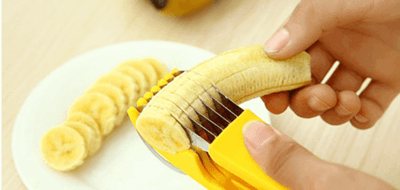
Bananas are considered a relatively high-calorie fruit compared to others. For every hundred grams of fruit without peel there are about 95 calories, and in one average banana there are about 120 grams.
Compared to a number of products, this is not so much, but if you compare, for example, with green apples or vegetables, you get an average figure.
The main harm of bananas is that most of the calories come from carbohydrates, and simple ones. The ratio of nutrients is approximately as follows:
- proteins - about one and a half grams;
- fats - about half a gram;
- carbohydrates - about 20 grams, including 7 grams of sugar, 3 grams of fructose, 4 grams of glucose, the rest are complex carbohydrates.

At the same time, bananas are quite healthy due to the content of many important components, such as:
- B vitamins;
- carotene, vitamin A;
- vitamin C;
- a number of other vitamins in smaller quantities;
- magnesium, manganese, potassium and other minerals.
Important! Bananas are also rich in iron. And it is necessary for the normal course of the formation of red blood cells (erythrocytes) and their transfer of oxygen to tissues. Also, consuming foods containing iron helps prevent anemia, and for those people who have it, it can significantly alleviate its course, or even get rid of the disease.
There are so many vitamins in bananas that one hundred grams of fruit will amount to 10 to 20% of the daily requirement. For example, it is especially rich in B vitamins, as well as minerals such as manganese, potassium and magnesium.
Expert opinion
Evgeniy Kislitsa
Practicing surgeon. Certified massage master. Two-time vice-champion and heavyweight champion of regional kettlebell lifting competitions.
The particular benefits of bananas are due to their high potassium content. This is due to the fact that this mineral is necessary for the normal course of all physiological processes at the cellular level. The reason is that potassium is the leading link in the potassium-sodium pump, a natural mechanism that ensures the entry of nutrients into the cell and the removal of toxic and unnecessary biological compounds from it. On the surface of each cell there is a cell membrane - a kind of “gate” through which some substances enter the cell, and others are removed from it. Potassium ions accumulate inside the cell, and sodium ions are located outside (the space inside the cell is limited from the space outside it by the cell membrane). The accumulation of ions with different charges on opposite sides of the cell membrane (potassium has a negative charge, and sodium has a positive charge) leads to a change in the charges inside and outside the cell: a negative charge is created in the cell, and a positive charge outside it. Whereas normally the cell charge is negative (approximately). For the normal existence of a cell, the charge must be equalized. It happens like this: upon reaching peak charges inside and outside the cell, special receptors located on the cell membrane are activated. As a result, the “gate” opens, and potassium ions leave the cell, and sodium ions enter it. The vital activity of every cell, and therefore every tissue, every organ in the body directly depends on the course of these processes.

